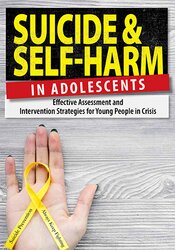- Recognize indirect signs of suicide risk and effectively measure an array of risk factors
- Motivate and positively engage suicidal and self-harming youth in their treatment
- Interventions to build your clients’ coping skills and improve their interpersonal effectiveness
- Effectively work with school, peers and family - employ a multi-systemic treatment approach
- Unlock online tools that facilitate social connection and develop a sense of belonging in your clients
Young people are dying. Alone and afraid.
Hanging, overdoses, slashed wrists. Young, horrific, unnecessary deaths. The human toll is staggering. The suffering devastating. Promising futures erased. Heart-broken parents aching to hold their children one last time. Desperate adolescents feeling isolated and unloved in their inner lives often wear a mask of strength. Terrified of hospitalization and stigma if they share their true feelings, they face a lonely and frightening battle.
You are the one working with them. The one trying to prevent this. The one who’s supposed to help this kid get better. Is there something I’m missing? Could I be doing more? How do I manage my liability?
You feel the weight of keeping someone alive. Being the one expected to prevent a suicide can be a heavy burden. There’s nowhere to hide from the responsibility and fear - or the guilt that could come if something happens.
But fear won’t steer you away. You won’t let them face it alone.
Be prepared to offer these kids guidance and hope.
Dr. Tony Sheppard is a licensed psychologist and certified group psychotherapist who has trained hundreds of clinicians, educators, and medical professionals in the treatment of self-harm and suicidal ideation. In more than 15 years of working with children, adolescents, and young adults, Tony has uncovered the specific tools and techniques you need to help your young suicidal and self-harming clients.
Watch this essential seminar and walk away with:
- Assessment and screening tools specifically tailored for NSSI and suicidal youth.
- Tips for working with schools, peers, and families to improve treatment outcomes.
- Motivational techniques that engage teens and adolescents in their treatment.
- Replacement behaviors for Non-Suicidal Self Injury clients.
- Distraction strategies that help clients cope in crisis.
- Interventions that enhance self-esteem and self-acceptance.
- Exercises that develop problem solving skills in clients and their families.
- 5 tips for assessing online resources for helping suicidal and self-harming youth.
Join Tony as he weaves his expertise and compassion into the practical skills you need to guide these kids out of the darkness back into the light!
